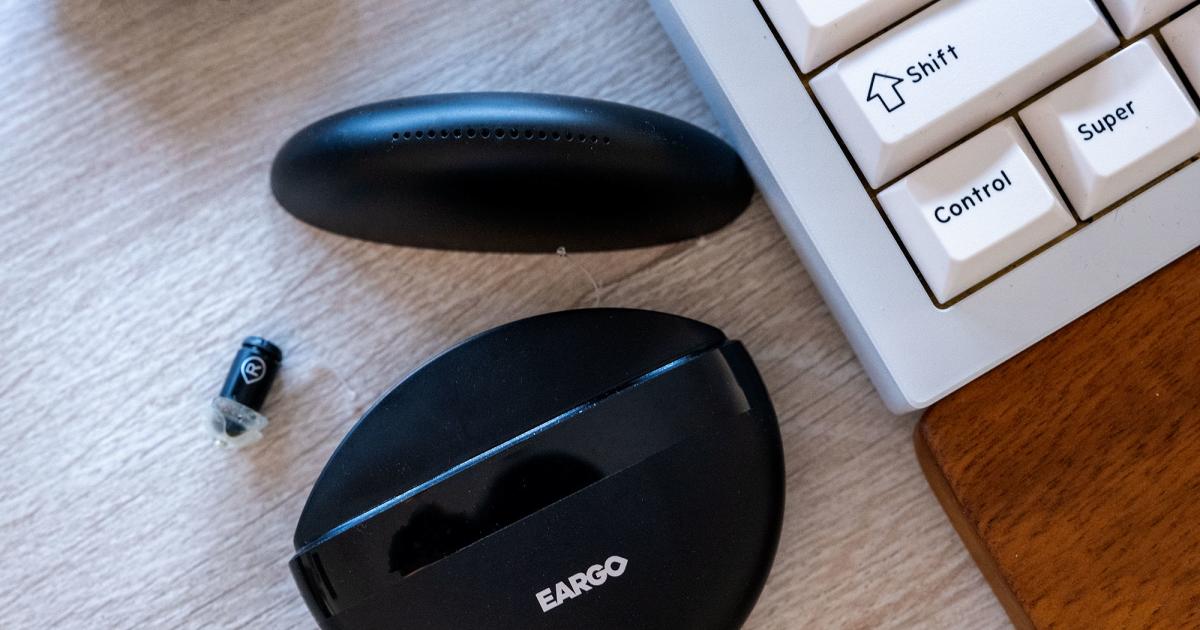Eargo 7: The tiny hearing aids you won't need to take out to shower

Eargo’s approach to hearing aids is more inline with tech brands like Apple and GoPro than its industry peers. While the hearing industry is busy trying to shake off its dowdy medical product image, Eargo’s out there releasing yearly models with ever new features rolling over stereotypes as it does so. This year’s model, the Eargo 7, doesn’t offer a huge leap over its predecessors, but like the latest aforementioned phone or rugged camera, it’s still the best model to date. But with continued improvements comes a narrower focus on the areas for improvement.
Most of these areas are minor software details. For example, the hearing test in the app initially left me unsure whether it had worked properly or not. On my first pass, not all the tones seemed to play (there’s a “replay” button, and pressing that sometimes the tone was unmissable). On a second pass, after speaking with an Eargo representative, I had a more reliable experience, but it was enough to give me some doubt about its efficacy until I was told my results were as expected on both tries.
After the first test, the app told me to place the hearing aids into their case to update them with the new settings – at which point it remained stuck on “connecting” until I restarted it.
To be clear, the above is the biggest wrinkle I’ve experienced with the Eargo 7, and if anything it’s a testament to the all round experience. One other minor annoyance is that the charging case seems to go into a deep sleep when it’s low on battery, which means it won’t wake the hearing aids when you remove them - even if they themselves have charge. A quick connection to a power cord is all you need to fix, but if you were out and about at the time, you might be out of luck.
The above aside, the experience from there on out has been smooth sailing. Eargo positions itself as a more affordable option for “invisible” hearing aids aimed at those with mild to moderate hearing loss. At $2,650, it might seem expensive compared to other OTC options, but most of the alternatives are not the tiny in-canal (CIC) type. Nor do they always offer other quality of life features like a slick charging case, personalized hearing profiles and other features you typically only find on conventional models your audiologist would supply.
The Eargo 7 adds a new enhanced version of the company’s “Sound Adjust” program that adapts the settings depending on your environment - this is what you need to take the hearing test for. This iteration includes a new “clarity” option which puts a focus on conversation. The new hearing aids are also IPX7 rated meaning you can wear them during a vigorous workout or even in the shower without worrying about damaging them. (They are not marketed as fully waterproof.)
Eargo’s other selling point is its ongoing customer support. The company urges new users to schedule a “welcome” call with one of its personal hearing professionals (PHP). There are a total of four ways to speak with a PHP depending on your needs (email, phone, chat, or video call). Scheduling a call is a trivial task in the app and there’s no cost at all. It’s this combination of modern technology and enhanced user experience that puts Eargo in a fairly unique spot in the growing pile of assistive hearing devices.
Of course, a well thought out app experience, sleek technology and good customer service are really important parts of the experience, but none of that matters if the hearing assistance isn’t up to scratch. For me, my unilateral hearing loss is certainly helped by the Eargo and there’s very little feedback unless you cover your ear canal completely. If you have mild to moderate hearing loss these are effective, but as always, you should probably consult your audiologist if you’re not sure what you need.
What I do appreciate is the way the assistive sound doesn’t emphasize sharp noises like jangling keys or enthusiastic typing and the general lack of feedback, which is a common issue for devices of this size. They definitely amplify sound adequately if I wear both, but with that comes a slight discomfort from having augmented hearing even in my “good” ear, which is a unique problem for unilateral hearing loss that obviously doesn’t apply to those with problems on both sides.
As before, battery life is plenty enough for all day use and the charging case offers two full re-charges. All day use is pretty comfortable, but for me, the first hour or two I am definitely aware I have something inside my ears before I gradually adapt. In general the built-in rechargeable battery adds to the convenience, though it also means a risk of degrading over time compared to using disposables.
In short, with the Eargo 7, the company once again makes a good case for how OTC hearing aids don’t have to mean scrimping on features and performance. But with the company’s tech-forward “start-up” approach do come some small challenges, such as the quirks in the app I mentioned right at the open. Fortunately, these are far easier to address and iron out than poor hardware of inadequate performance, which isn’t an issue here.
This article originally appeared on Engadget at https://www.engadget.com/eargo-7-the-tiny-hearing-aids-you-wont-need-to-take-out-to-shower-140000815.html?src=rss* This article was originally published here



Comments
Post a Comment